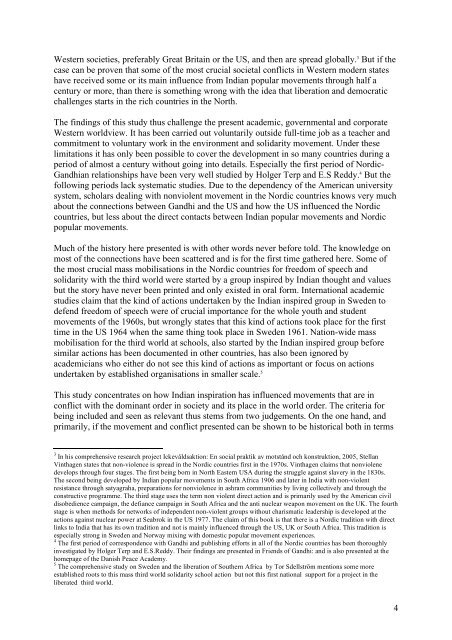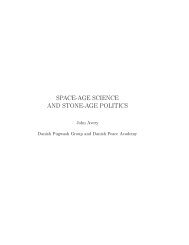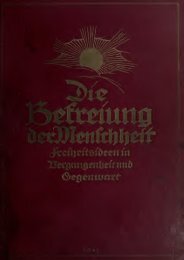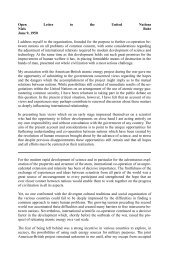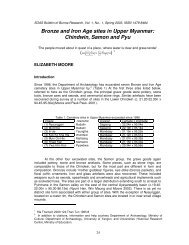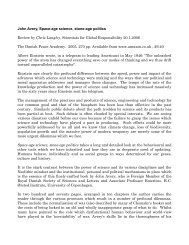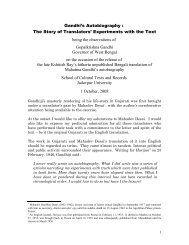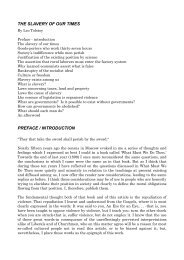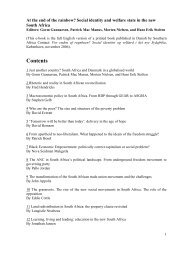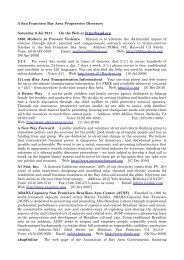Indian-Nordic Encounters 1917-2006 - Det danske Fredsakademi
Indian-Nordic Encounters 1917-2006 - Det danske Fredsakademi
Indian-Nordic Encounters 1917-2006 - Det danske Fredsakademi
You also want an ePaper? Increase the reach of your titles
YUMPU automatically turns print PDFs into web optimized ePapers that Google loves.
Western societies, preferably Great Britain or the US, and then are spread globally. 3 But if the<br />
case can be proven that some of the most crucial societal conflicts in Western modern states<br />
have received some or its main influence from <strong>Indian</strong> popular movements through half a<br />
century or more, than there is something wrong with the idea that liberation and democratic<br />
challenges starts in the rich countries in the North.<br />
The findings of this study thus challenge the present academic, governmental and corporate<br />
Western worldview. It has been carried out voluntarily outside full-time job as a teacher and<br />
commitment to voluntary work in the environment and solidarity movement. Under these<br />
limitations it has only been possible to cover the development in so many countries during a<br />
period of almost a century without going into details. Especially the first period of <strong>Nordic</strong>-<br />
Gandhian relationships have been very well studied by Holger Terp and E.S Reddy. 4 But the<br />
following periods lack systematic studies. Due to the dependency of the American university<br />
system, scholars dealing with nonviolent movement in the <strong>Nordic</strong> countries knows very much<br />
about the connections between Gandhi and the US and how the US influenced the <strong>Nordic</strong><br />
countries, but less about the direct contacts between <strong>Indian</strong> popular movements and <strong>Nordic</strong><br />
popular movements.<br />
Much of the history here presented is with other words never before told. The knowledge on<br />
most of the connections have been scattered and is for the first time gathered here. Some of<br />
the most crucial mass mobilisations in the <strong>Nordic</strong> countries for freedom of speech and<br />
solidarity with the third world were started by a group inspired by <strong>Indian</strong> thought and values<br />
but the story have never been printed and only existed in oral form. International academic<br />
studies claim that the kind of actions undertaken by the <strong>Indian</strong> inspired group in Sweden to<br />
defend freedom of speech were of crucial importance for the whole youth and student<br />
movements of the 1960s, but wrongly states that this kind of actions took place for the first<br />
time in the US 1964 when the same thing took place in Sweden 1961. Nation-wide mass<br />
mobilisation for the third world at schools, also started by the <strong>Indian</strong> inspired group before<br />
similar actions has been documented in other countries, has also been ignored by<br />
academicians who either do not see this kind of actions as important or focus on actions<br />
undertaken by established organisations in smaller scale. 5<br />
This study concentrates on how <strong>Indian</strong> inspiration has influenced movements that are in<br />
conflict with the dominant order in society and its place in the world order. The criteria for<br />
being included and seen as relevant thus stems from two judgements. On the one hand, and<br />
primarily, if the movement and conflict presented can be shown to be historical both in terms<br />
3 In his comprehensive research project Ickevåldsaktion: En social praktik av motstånd och konstruktion, 2005, Stellan<br />
Vinthagen states that non-violence is spread in the <strong>Nordic</strong> countries first in the 1970s. Vinthagen claims that nonviolene<br />
develops through four stages. The first being born in North Eastern USA during the struggle against slavery in the 1830s.<br />
The second being developed by <strong>Indian</strong> popular movements in South Africa 1906 and later in India with non-violent<br />
resistance through satyagraha, preparations for nonviolence in ashram communities by living collectively and through the<br />
constructive programme. The third stage uses the term non violent direct action and is primarily used by the American civil<br />
disobedience campaign, the defiance campaign in South Africa and the anti nuclear weapon movement on the UK. The fourth<br />
stage is when methods for networks of independent non-violent groups without charismatic leadership is developed at the<br />
actions against nuclear power at Seabrok in the US 1977. The claim of this book is that there is a <strong>Nordic</strong> tradition with direct<br />
links to India that has its own tradition and not is mainly influenced through the US, UK or South Africa. This tradition is<br />
especially strong in Sweden and Norway mixing with domestic popular movement experiences.<br />
4 The first period of correspondence with Gandhi and publishing efforts in all of the <strong>Nordic</strong> countries has been thoroughly<br />
investigated by Holger Terp and E.S.Reddy. Their findings are presented in Friends of Gandhi: and is also presented at the<br />
homepage of the Danish Peace Academy.<br />
5 The comprehensive study on Sweden and the liberation of Southern Africa by Tor Sdellström mentions some more<br />
established roots to this mass third world solidarity school action but not this first national support for a project in the<br />
liberated third world.<br />
4


